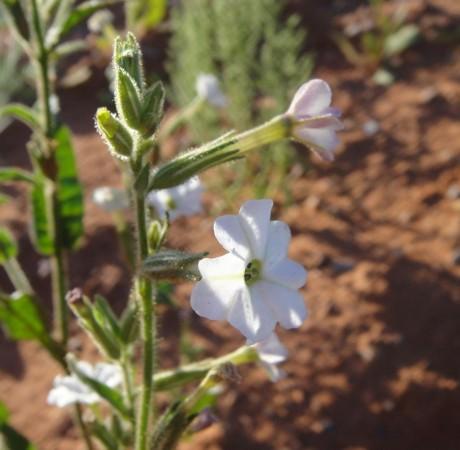It is common to hear doctors and health experts call tobacco a "killer". It makes sense as 8 million people die annually due to tobacco according to the WHO. But a recent finding takes the phrase "Tobacco is a Killer" to a very literal level. Scientists have discovered a unique species of tobacco in Australia that can trap and kill insects.
Found by an international team of researchers, the species christened Nicotania insecticida utilizes a sticky substance covering its surface to snare insects and kill them. The insect-killing species was recovered near a truck stop along the Northwest Coastal Highway in Western Australia's Gascoyne region.
"This is the first time a wild tobacco species has been reported to kill insects, so it is very significant," said Dr. Mark Chase, corresponding author of the study, in a statement. The research was published in the journal Curtis's Botanical Magazine. Six other new species of wild tobacco were discovered through the study.
An Insect Killer

Three institutions collaborated for research— Curtin University, Royal Botanic Gardens (RBG) Kew, and the University of Vienna. They hunted for tobacco species across all Australian states and territories, except Tasmania where these plants are not found. The focus of the research was to understand how a group of herbaceous species has adapted to the harsh conditions of Australian regions that are arid.
N. insecticida was one of the species that the team came across during the course of their study. The harmless-looking flowering plant has sticky glands that line all of its surfaces. They regularly trap and kill small insects such as aphids, gnats, and small flies. According to the authors, this is the first time that a wild tobacco species has been known to trap and kill insects. The discovery gives rise to a curious question—Is N. insecticida carnivorous?

"Although the glands look similar to carnivorous sundew plants, we do not think that this tobacco species is truly a carnivorous plant," averred Dr. Chase in another statement. While this mechanism is probably a defensive one, it can be viewed as an early step towards becoming truly carnivorous, he added. Further experiments will be carried out to ascertain whether the plant derives any benefits through the ensnaring of insects, such as absorption of nutrients as the dead insects decay.
Unchanging Killing Nature
While the team continues to learn more about the "killer tobacco" species, they sought to determine whether the insect-killing nature of the plant was only confined to the harsh conditions in which it grew. The result put the 'Nature vs. Nurture' to rest at least in this case. Dr. Chase explained. "The seeds from WA were cultivated back in London in the greenhouses at Kew Gardens, where the plants continued to kill insects in the greenhouses, so its insidious deadly nature is not diminished by the great distance from its homeland."

Six of the other species of wild tobacco plants were uncovered by the researchers. A species named Nicotiana salina was found to grow along the salt lakes that form the border between the Wheatbelt in Western Australia and the central region. This is significant as the central region is excessively dry and unsuitable for crop cultivation.
Talking about other discovered species, Dr. Maarten Christenhusz, co-author of the study, said, "Another of the new species, Nicotiana walpa, from Kata Tjuta National Park in the Northern Territory (near Uluru) was given its name from the local Aboriginal word for 'wind' because it appears only when there have been storms in the desert. If the rains do not appear, as is often the case, this species remains as seeds in the soil."















